The Bakelite jewellery bonanza
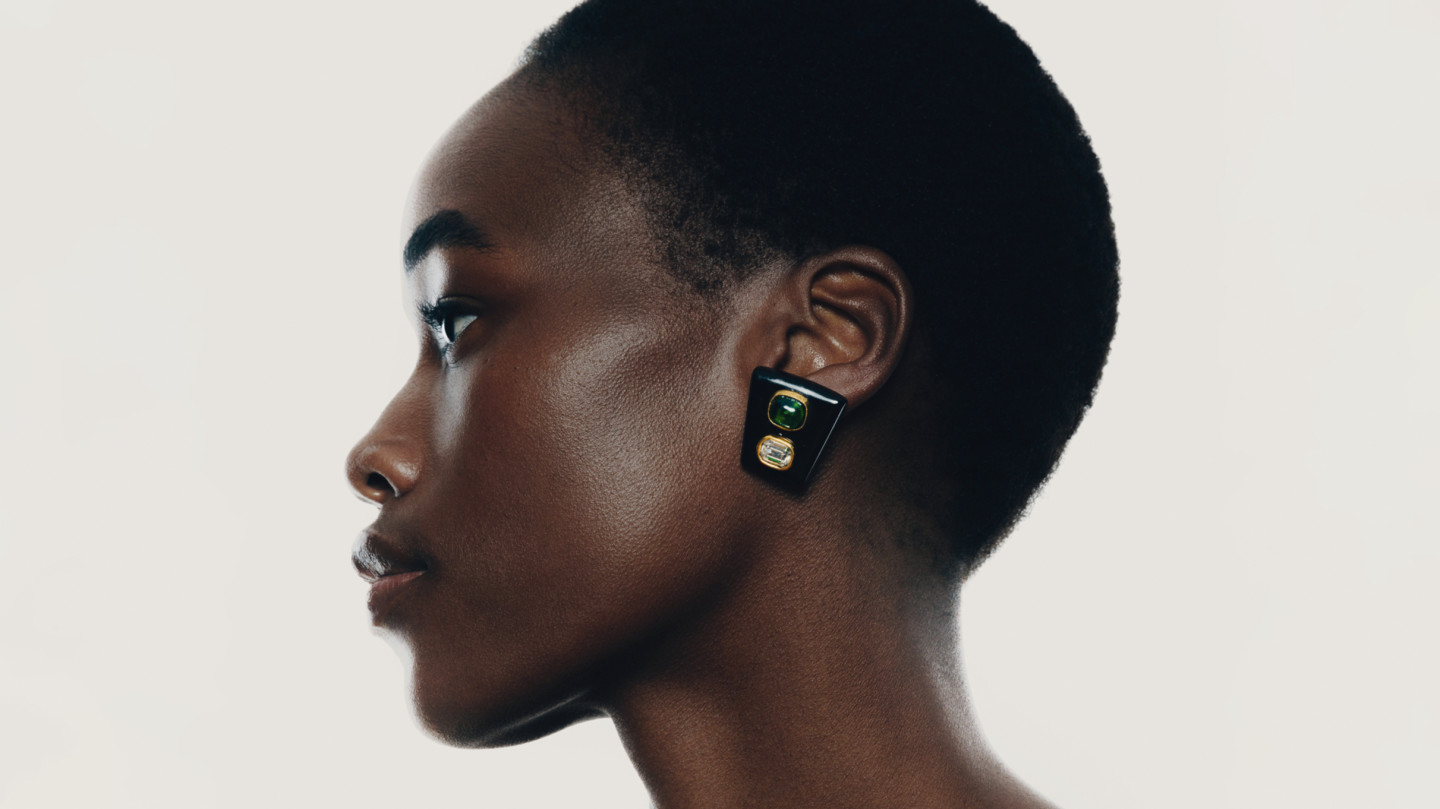
Simply sign up to the Style myFT Digest -- delivered directly to your inbox.
Who first made Bakelite jewellery collectable? Some say Coco Chanel, after she introduced it in the 1920s. Others cite Andy Warhol, whose 210 bracelets were auctioned after his death in 1987, throwing a spotlight on a then-outmoded material. But equal acclaim should perhaps be given to mild-mannered payroll clerk Dennis Masellis, who embezzled $7m from the Chicago law firm he worked for in the 1990s and went on a spending spree for recherché resin. When the jig was up in 2000, Masellis was put behind bars and his vast collection was offered at Doyle auction house, New York. A first sale brought in close to $2m. Pieces that had been worth next to nothing in the 1980s sold for thousands. A single cuff with a green-on-orange crosshatch inlay pattern sold for $6,000 from a low estimate of $800. It would prove to be no outlier.
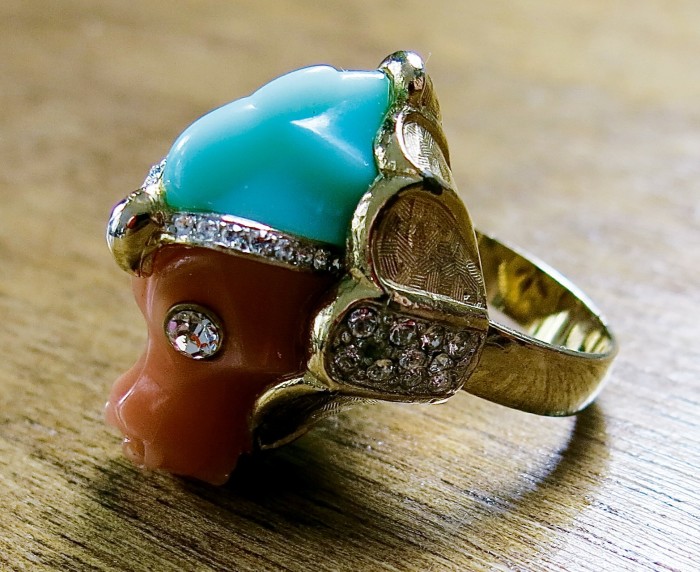
The first plastic ever made – patented by Leo Baekeland in 1909 – Bakelite is a blend of phenol and formaldehyde; expert collectors can smell authentic Bakelite when it is immersed in hot water. Manufactured in blocks that can be hand-carved, its frequently visible tool markings mean the aesthetic is closer to ivory than today’s machined resin jewellery – but in a lush Sonia Delaunay palette.
Life in plastic
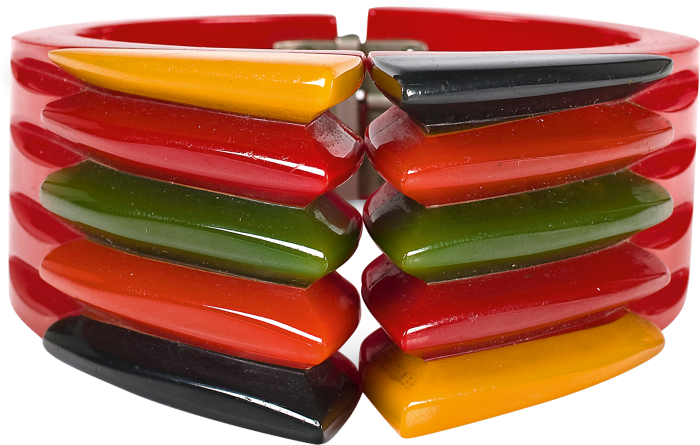
Philadelphia bangle, sold for £3,966 at Bonhams
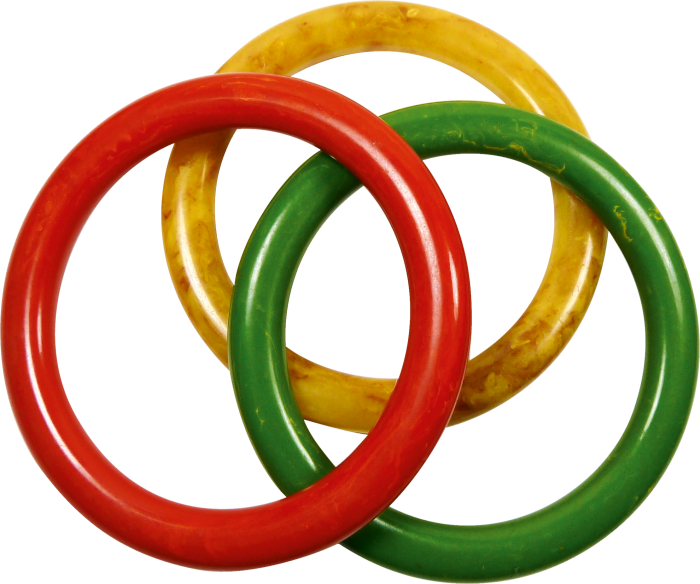
Trio of bracelets, from £25 each, gillianhorsup.com
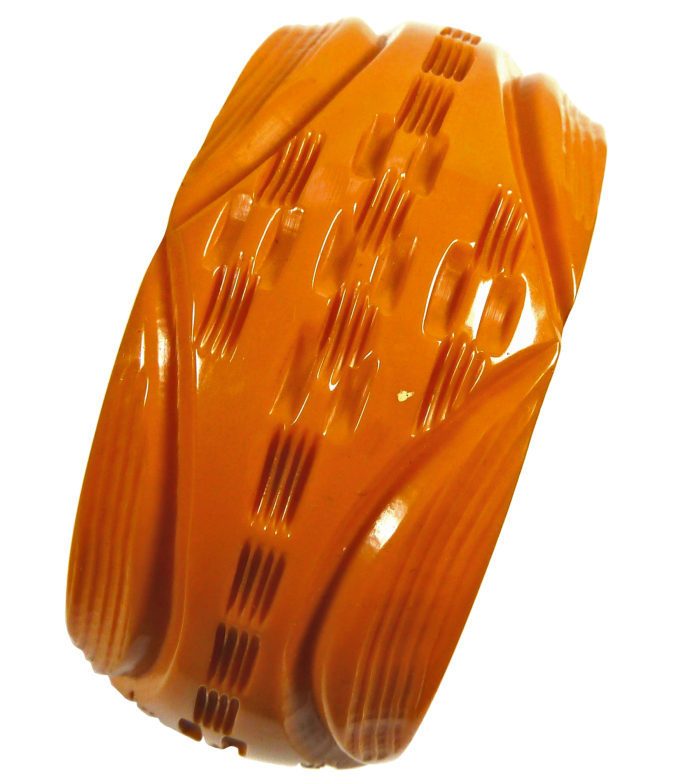
Cream corn bangle, from around £25, gillianhorsup.com
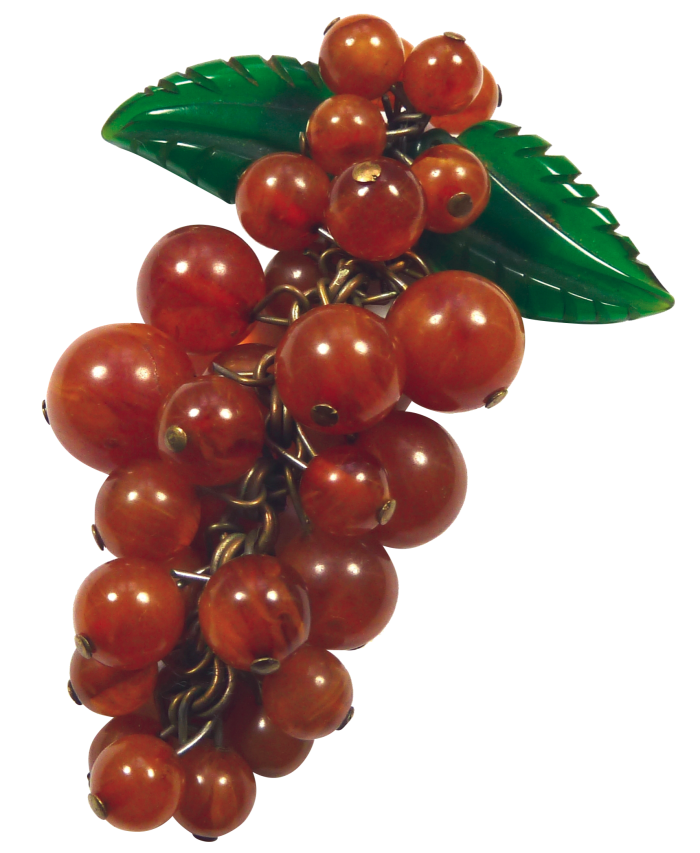
A leaves and berries brooch, £88, gillianhorsup.com
From the 1920s to the ’40s, Bakelite jewellery was a radical new rage, before cheaper plastics replaced it. Now it feels rarefied. “I love the feel of Bakelite,” says Jean, one half of New York-based models and social-media darlings The Idiosyncratic Fashionistas. “I wear multiple rings daily. It can be dressy or casual so I pair necklaces and bracelets with dresses, jackets, suits and separates. I favour opaque primary colours rather than translucent ‘root beer’ pieces.”
While a narrow one-colour Bakelite bracelet can be sourced from London-based specialist Gillian Horsup for upwards of £20, a “Philadelphia” bracelet – one of the most celebrated designs of the 1930s, with tapered, graphic layers of yellow, red, green and black on a hinge – commands US auction prices of $5,000. But black-and-white pieces are also much sought after – vintage costume jewellery dealer Susie Hoimes, of MDVII in San Francisco, is offering a handsome 1930s carved black bracelet for $875. Rare finds include “end of day” designs, featuring swirls of four or more distinct colours that used up Bakelite oddments. Smooth bracelet examples appear on 1stdibs for around £800, while carved ones are often pricier.
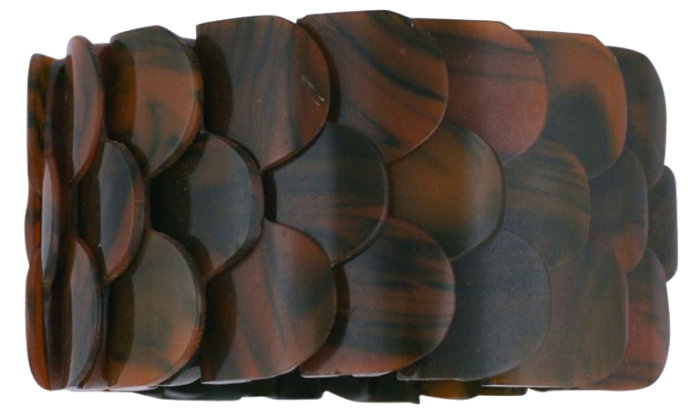
French “end of day” Bakelite fish scale bracelet, £626.36, 1stdibs.com
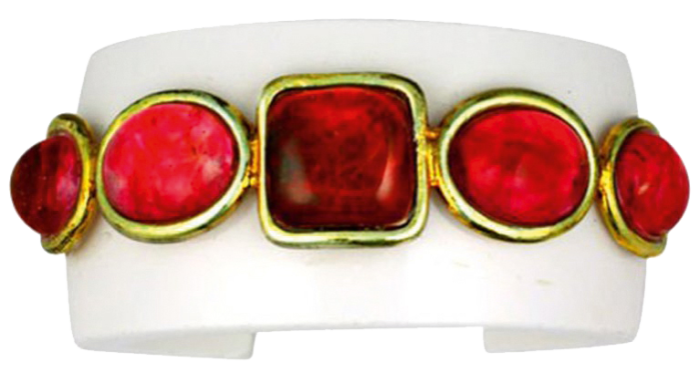
Chanel Bakelite and Gripoix poured-glass cuff, £2,173, 1stdibs.com
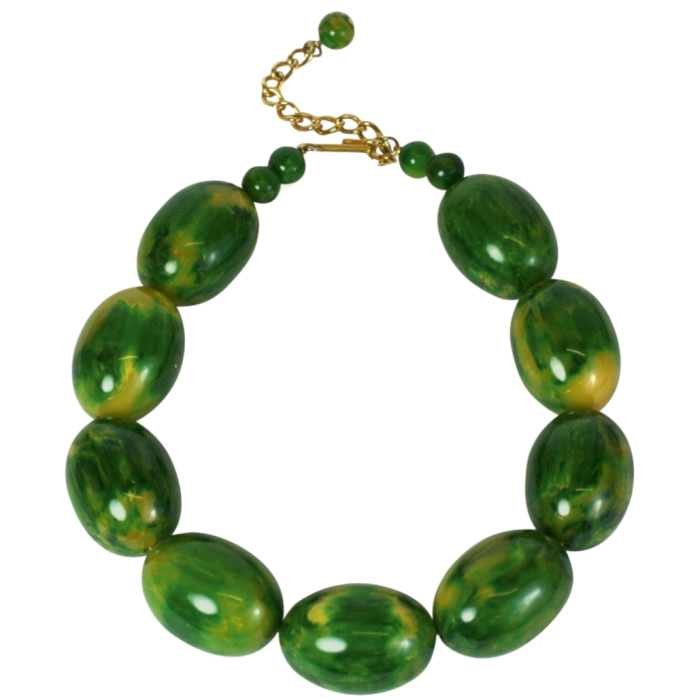
Lanvin end of day beads, £350, 1stdibs.com
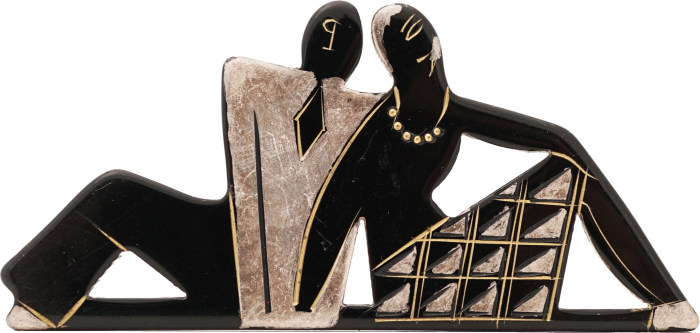
Jazz age brooch, €990, hecateparis.com
Most vintage Bakelite pieces are unsigned, but the attachment of names brings a distinct cachet. Among Warhol’s collection were pieces by Auguste Bonaz, who created hair ornaments and brooches in Paris in the 1920s and ’30s. Hecate in Paris recently had a Jazz Age brooch by Bonaz on sale for €990, but bargain combs can occasionally be found on Etsy for under £100.
More well-known names are attached to latter-day Bakelite: it was embraced by Valentino and Caroline Herrera. Fashion curator Carmen Haid has dozens of pieces in her collection, including a pair of ’50s earclips by Lanvin that “encompass minimalism and futurism at the same time”. (Currently there is a beautiful smooth green “end of day” Lanvin necklace on 1stdibs for £350.) Haid also owns a chunky coral- and jade-coloured ring in the shape of a seahorse, with an exceptional backstory: “I bought it in Paris years ago. It was worn by Elizabeth Taylor on screen as Cleopatra. It was €750 – a great deal.” Haid loves wearing her Bakelite. “I see it as a forgotten material, and it’s more organic-looking than modern plastic.”
Bakelite’s current popularity is bonded to the buzz around circularity in fashion. “We’ve seen an increase of 40 per cent in vintage jewellery sales since last year,” says London dealer Susan Caplan. “As fashion looks to phase out new plastic, I expect vintage Bakelite’s demand to increase.” One of her recent acquisitions was a pair of 1970 Chanel earclips with Gripoix detailing (£675). “They are particularly exciting as they are from when Coco was still at the helm.”
Chanel’s use of Bakelite is arguably the most elegant expression of the material. Leslie Chin and Mark Walsh of Vintage Luxury in New York State sell through 1stdibs and have handled some of the rarest Chanel pieces. “A lot of couturiers experimented with Bakelite prewar because it was a revolutionary novelty,” says Chin. “It would shatter, which is why there are so few pieces from the 1930s. Chanel Bakelite from that era is super-rare. It was once considered essentially throwaway jewellery, but the last time we offered something it was in the high five figures. Now it would be six.” They currently have a white Chanel cuff with red glass detailing from the 1980s ($2,950).
While rarer signed pieces will appreciate in value, for many collectors, it’s all about sensation. “I stack bracelets and wear lots at once,” says Jean with glee. “I just love the clunking sound that two pieces of Bakelite make when tapped together, and the cacophony of an armful of bracelets.”
Comments